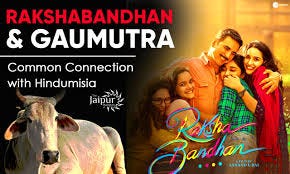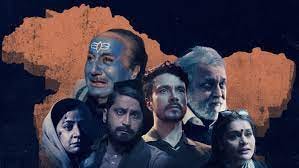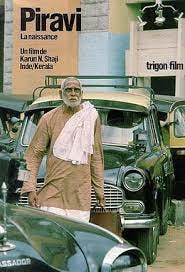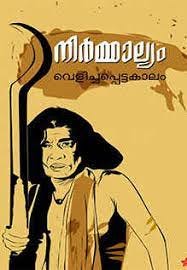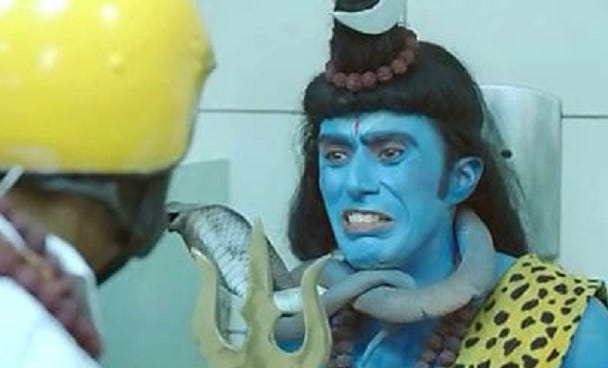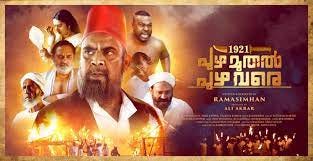A version of this essay has been published by swarajyamag.com at https://swarajyamag.com/culture/cinema-as-metaphor-enough-with-trashing-hindu-sentiment-especially-as-streaming-largesse-fades
The ongoing debate about three Hindi/Urdu films: Lal Singh Chaddha, Shamshera and RakshaBandhan is interesting. Social media is trending calls to boycott all three because they show Hindus and Hinduism in a bad light. They are not all released yet, so in some cases it is the antecedents of the principals, and their prior bad behavior, that is triggering boycott calls.
This is intriguing for several reasons: one is that usually passive Hindus are standing up for their faith in peaceful dissent; two is that cinema has such deep visceral impact that they can manufacture the truth; three is that the financials don’t add up; four is that we may have passed peak Hindi/Urduwood; and five is the persistent hypocrisy of the ‘liberal’ crowd screaming about freedom of expression within weeks after they urged a boycott of The Kashmir Files and grumbled about devout Hindu Nambi Narayanan in Rocketry: The Nambi Effect.
I confess I am not a regular film-goer, especially not someone who habitually watches Hindi/Urdu films, although at one time I was a fan of the New Wave of independent/realist films in Hindi, such as Bhuvan Shome, Albert Pinto, Aakrosh, Garam Hawa, Uski Roti. The last two films I saw in theaters were Tanhaji and The Kashmir Files. This is partly because I find the increasingly Urduized lingo in mainstream films simply incomprehensible. Streaming video’s subtitles do help.
I used to see a lot of Malayalam films. Often New Wave, low-budget, realist (and outstanding) films, such as Piravi, Uttarayanam, Kanchana Sita, Vaastuhara, Elippathayam, Swayamvaram (but now I watch mostly mainstream films streamed on OTT). Malayalam mainstream film is where I first encountered what has now become endemic enough to outrage a lot of viewers: the casual or deliberate attack on Hindus and Hinduism.
The specific film that first sensitized me was 1973’s Nirmalyam, which won national awards. The climactic scene has a velichapad, or temple oracle, spitting on the deity at the small, poor Hindu temple that he had served all his life, in despair that his life was ruined, and he falls down dead. Notably, the very fine actor was a Christian named P J Antony. (You might remember another Christian years later in Kerala who was accused of blasphemy and had his hand cut off.)
What staggered me was that you would never see such a scene about any other religion in even the most ‘progressive’ Malayalam films, as it would be blasphemous, and there would be umm… consequences. But in the lexicon of leftist ‘intellectuals’, such a narrative demeaning Hindus is acceptable, and the director/writer went on to win the Jnanpith for his body of work about decadent Nair families: after all, the Akademi was dominated by people with similar views.
I began to notice that Hindu swamis are inevitably portrayed as crooks, rogues or cheats in Malayalam films, whereas Christian padres are uniformly holy and kind, and Muslim mullahs always stern but with a heart of gold. That is a standard leftist narrative. Over time, the narrative has become rigid, and even in fictional retellings of real incidents where an Abrahamic hurt a Hindu, the roles are reversed, so that the villain is always a Hindu.
Over time, as wealthy Christians began to fund the films, their stories began to take center stage, but the motif of Hindu-hatred continued. Now the majority of films are funded by wealthy Muslims, but the Hindu-hatred is unabated. I think this is pretty much the case in Hindi/Urdu films too now, where it is par for the course to mock Hindus, Hindu religious rituals and deities.
The demonization in Malayalam is so extreme that a recent film, Meppadiyan, was attacked simply because it had a staunch and religious Hindu protagonist, and featured a Sewa Bharati-funded ambulance! This is reaching absurd levels of ‘cancel culture’, in effect denying Hindus the very right to exist. It is normalizing the idea of ethnic cleansing and genocide.
The twitter handle @GemsofBollywood has documented widespread Hindu-hatred in Hindi/Urdu films, including surprising ones going way back into the 1970s. Certain script-writers specialize in mocking Hinduism; well-known actors too, including those with known sympathies to Pakistan, Turkey, Qatar etc. The evidence is overwhelming, and social media is making ordinary Hindus aware of it, whereas the mainstream media buried it.
That is point number 1: Hindus, fed up with this attack, are reacting in peaceful, legal, Gandhian ways, boycotting them. It is both tactical (“I’ll put my money where my mouth is”) and strategic, because films with their visceral impact have an outsize chance of becoming ‘The Truth’. They mold and cement lasting public perceptions, which is point number 2, as with Hollywood’s creation of massive US soft power.
For instance, there were several films in the works for the 2021 centenary of the Moplah riots and massacres, rapes, and forced conversion of Hindus in Malabar. Most of them planned to show the rioters as heroic figures; but a public outcry forced them to go slow. The only one that seems to be finished is sympathetic to the Hindu victims: it is From River to River (Puzha muthal puzha varey), and it is apparently planned for release.
Obviously, boycotts will hurt films’ revenues, which brings up point number 3: it is not clear that things are on the level. There are hundreds of films being produced in Malayalam, Tamil, Telugu, Hindu and Urdu, and the vast majority of them will fail at the box office. So why are they being produced in the first place, if they incur losses? The obvious answer is that they are a front for financial hanky-panky, most likely money laundering.
No, the financials simply don’t add up: something is fishy. Some films report massive collections in China. Which could mean Chinese money (or money from third countries) is being laundered for other, sinister, purposes. Similarly, some ‘house-full’ shows run to near-empty theaters, but they show pucca accounts to the tax authorities: lo, money has turned ‘white’.
Thus point 4: that we may have reached ‘peak Hindi/Urduwood’. There are two good reasons to believe this. One is the success of films from outside that camp, eg. Bahubali, RRR, Pushpa, KGF, indicating that the film-going public is fed up with Hindi/Urduwood. I am personally not a fan of the excesses of RRR, preferring realism in historical times, but I understand its value as pure entertainment (and I loved the fantasy of Bahubali, a modern masterpiece set in the mythical past).
Unlike RRR (which gained critical and apparent market success in the West), the Mumbai industry has not produced a single global hit… ever. That’s partly because of its dubious ideology, and partly because of lack of originality – almost everything is a second-rate parody of some Western film, as I expect Lal Singh is, although in its defense, at least it isn’t stealing intellectual property, being an authorized remake.
Another reason is that, in addition to illegal hawala transactions, in recent times Hindi/Urduwood has depended on selling its output to the likes of Netflix, Amazon and Disney. They have managed to convince OTT channels that their product sells well in India, thus in effect gaming the OTT guys into paying good money for not only anti-Hindu but also anti-India trash.
That gravy train is now grinding to a halt. Slowing subscriber uptake and plunging valuations have forced Netflix et al to take a hard look at what actually sells: the carte blanche to local partners will end. The Financial Times had a detailed article on this titled The Great Netflix Correction: loss of subscribers throws streaming business model into question.
The growing and visible ruckus about Shamshera etc, and several recent films that bombed badly, means that Hindi/Urduwood will have a hard time monetizing deadbeat scripts that piss off the public, as the OTT folks will ask more penetrating questions about viability and return on investment. There will be more demand for the likes of the patriotic Family Man on Amazon Prime. Amazon with its billions is less troubled than Netflix and Disney, but it will surely also ask hard questions.
Finally, point number 5: the hypocrisy of the ‘intellectual’ ‘liberal’ class of India. They are quick to shout down and ‘cancel’ anything that they do not like (remember the ‘ghar wapsi’ dramas?), but when the same happens in reverse, they play the victim card. Not any more, folks. The NYT and WaPo may buy your crocodile tears, but the average film-goer is on to you. You have to make money the old-fashioned way, by earning it, not by arranging a suspension of disbelief.
1450 words, 6 Aug 2022 updated 11 Aug 2022.
Errata: Corrected the name of the Nirmalayam actor to P J Antony. Earlier, I had mentioned it incorrectly as ‘Joseph’.
See also:
https://esamskriti.com/e/National-Affairs/For-The-Followers-Of-Dharma/Bollywood-colon-s-passive~aggressive-attitude-towards-Hinduism-1.aspx hat tip @KartikV
https://www.indiafacts.org.in/culture-wars-hindus/


